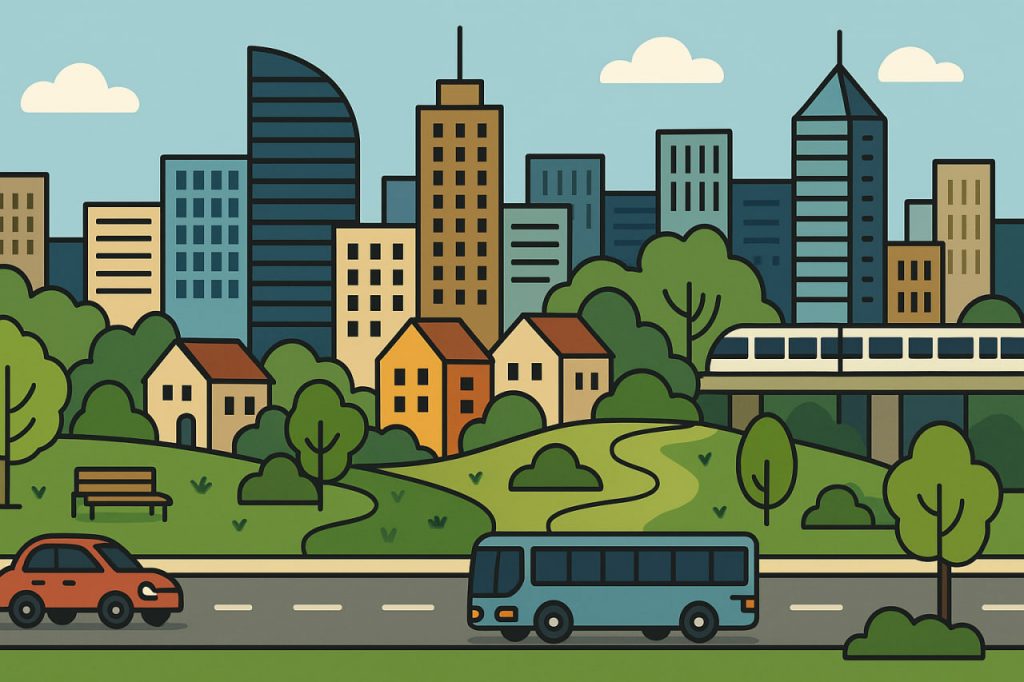Urbanization is the process by which populations move from rural areas to cities, leading to the growth of urban settlements. Over the past century, it has become one of the most defining global trends, with more than half of the world’s population now living in cities.
Historical Background
Urbanization began thousands of years ago with the rise of the first cities in Mesopotamia, Egypt, and the Indus Valley. However, the most rapid urban growth occurred during the Industrial Revolution, when people moved to cities for factory work. In the 20th and 21st centuries, globalization and technological progress further accelerated this trend.
Causes of Urbanization
Several factors drive urbanization:
- Economic opportunities – jobs in industry, trade, and services.
- Infrastructure – access to schools, hospitals, and transportation.
- Social life – cultural diversity, education, and community.
- Technological development – cities as hubs of innovation.
Positive Effects of Urbanization
Urbanization can improve living standards by providing better access to education, healthcare, and employment. Cities often foster innovation, culture, and economic growth, becoming centers of global development.
Negative Consequences
However, rapid and uncontrolled urbanization brings serious challenges:
- Overpopulation leading to crowded housing and slums.
- Pollution from vehicles, factories, and waste.
- Loss of green spaces and biodiversity.
- Social inequality between wealthy and poor districts.
Urbanization and the Future
By 2050, it is estimated that nearly 70% of the global population will live in cities. The focus of urban planning is shifting toward sustainable cities, with renewable energy, efficient public transport, and eco-friendly housing to balance human needs with environmental protection.
Conclusion
Urbanization is reshaping the world, bringing both opportunities and challenges. The task of the future is to make cities not only larger but also more sustainable, equitable, and livable for everyone.
Interesting Facts
More than 56% of the global population now lives in urban areas, a figure expected to rise to nearly 70% by 2050. This shift drives economic growth, innovation, and cultural exchange, yet also brings challenges such as pollution, housing shortages, and resource strain. Interestingly, cities occupy only about 3% of Earth’s land surface, but they consume over 75% of global energy and produce the majority of carbon emissions. As populations concentrate, urban planners are reimagining infrastructure through sustainable transport, green architecture, and smart-city technologies that optimize energy and data flow. Mega-cities like Tokyo, Delhi, and Shanghai showcase both the potential and complexity of urban life. In essence, urbanization reflects humanity’s ability to build connected, creative environments — but also its responsibility to ensure these spaces remain livable, resilient, and equitable for future generations.
Glossary
- Urbanization – growth of cities due to population migration and expansion.
- Industrial Revolution – period of rapid industrial and social change in the 18th–19th centuries.
- Infrastructure – systems like transport, water, and electricity that support city life.
- Overpopulation – when the number of people exceeds the capacity of an area.
- Sustainable city – a city designed to minimize environmental impact while ensuring quality of life.
- Globalization – worldwide integration of economies, cultures, and societies.


